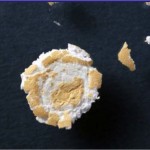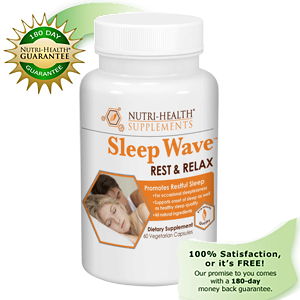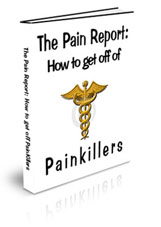New Oxycontin Is Harder to Abuse
Michael had been snorting OxyContin for five years when a new version of the drug, intended to deter such abuse, hit the market last summer. The reformulated pills are harder to crush, turning instead into a gummy substance that cannot be easily snorted, injected or chewed.
James, 28, of Revere, Mass., at a treatment center in East Boston. He said he started using heroin when OxyContin changed its formula.

Uncrushable Oxycontin
A blow with a hammer deforms, but won’t crush, the new OxyContin. The original formula could be turned into powder easily.
Instructed by his dealer, Mr. Capece, 21, tried microwaving one of the new pills, then sniffing up the burnt remains. Other addicts have tried to defeat the new formula by freezing, baking or soaking the pills in solvents ranging from soda to acetone. Many are ending up frustrated.
“It’s too much work,” said Mr. Capece who entered a rehab program here last month. “It wasn’t anything I enjoyed.”
A powerful narcotic meant for cancer patients and others with searing pain, OxyContin is designed to slowly release its active ingredient, oxycodone, over 12 hours. But after it was introduced in 1996, drug abusers quickly discovered that chewing an OxyContin tablet — or crushing one and snorting the powder, or injecting it with a needle — produced an instant high as powerful as heroin. It has been blamed for waves of addiction that have ravaged certain regions of the country, and has been a factor in many overdose deaths.
Purdue Pharma, the maker of OxyContin, may have succeeded for now in reducing illicit demand for its reformulated drug. But in several dozen interviews over the last few months, drug abuse experts, law enforcement officials and addicts said the reformulation had only driven up interest for other narcotics.
Demand appears especially high for pure oxycodone pills that come in a 30-milligram dose, often called “Perc 30s” or “Roxies” on the street. Opana, a time-release painkiller similar to OxyContin that has been on the market for five years, is showing up increasingly in police reports and has been blamed for a rash of overdose deaths. And heroin use has jumped sharply in many regions, according to rehab centers and the police.
“It’s just a matter of switching,” said John Burke, commander of the drug task force in Warren County, Ohio, and president of the National Association of Drug Diversion Investigators. “If I’m an addict, I’m going to find a drug that works.”
Mr. Burke said abuse of other oxycodone drugs was already growing before OxyContin was reformulated last August, partly because the other drugs are cheaper and because OxyContin had become harder to find on the street. Many doctors had stopped prescribing it because of its stigma and switched to other oxycodone drugs, Mr. Burke said.
Raymond V. Tamasi, president and chief executive of Gosnold on Cape Cod, a treatment center, said he had noticed that addicts switch initially to the Perc 30s.
“But eventually people make that progression from the pills to what appears to be a more economical high, which is heroin,” Mr. Tamasi said.
Prices vary, but 30-milligram oxycodone tablets generally sell on the street for $20 to $30 each, according to addicts and law enforcement officials. The old OxyContin sold for as much as $80 per 80-milligram pill. Several recovering addicts in Massachusetts said an 80-milligram tablet of the reformulated version, called OxyContin OP, costs about $40.
“You don’t make any money selling the OPs,” said James Moore, 28, who said he stopped selling and snorting OxyContin and moved on to heroin after the new version came out last year.
Mr. Moore, who said he used to snort as many as 10 OxyContin pills daily, was arrested in November for selling heroin and now lives at a halfway house in East Boston. Addicts can still get high from swallowing the new OxyContin pills, he said, but most prefer the immediate rush delivered by snorting or injecting the powder.
Outside of OxyContin, which comes in doses as high as 80 milligrams, the 30-milligram dose is the highest available for oxycodone, which is why addicts covet it.
Some addicts are reporting an even more powerful high from Opana, a time-release opiate painkiller whose active ingredient is oxymorphone. In Louisville, Ky., there have been at least 14 deaths this year involving Opana, according to the Jefferson County coroner’s office.
Purdue Pharma should have reformulated OxyContin sooner, said Steven Tolman, a state senator in Massachusetts who led a commission that investigated OxyContin abuse. The company asked the Food and Drug Administration to approve the new version for sale in November 2007; it won the approval in April 2010. It is the first painkiller reformulated to deter abuse, according to the F.D.A., which is now studying several proposed reformulations of other opiate drugs.
“It should not clear their conscience,” Mr. Tolman said of the change. “These people are scientists. Why didn’t they do this years ago?”
Not everyone is convinced that the days of abusing OxyContin are over. The F.D.A. is requiring Purdue Pharma to conduct clinical trials before it can claim that the new version is less abuse-prone. Though many addicts appear frustrated by the reformulation, Dr. Mark Publicker, an addiction medicine specialist at Mercy Recovery Center in Westbrook, Me., said he was “absolutely certain” that people would figure out how to abuse the new OxyContin.
“I like to think of them as drug addict scientists in white lab coats,” he said, pointing to Web sites where drug abusers debate various ways of trying to defeat the new formulation.
Libby Holman, a Purdue Pharma spokeswoman, said that based on initial data and reports, the company is “cautiously optimistic” that the reformulation will eventually prove less susceptible to abuse. But long-term studies will be necessary, she said in an e-mail, adding, “It is still too early to make any conclusions about the product’s impact on abuse and misuse in real-world settings.”
The company has initiated eight epidemiological studies and will report updates to the F.D.A., which approved their design, Ms. Holman said. Meanwhile, the new OxyContin pills have won some unflattering nicknames, said Dr. Ronald Bugaoan, director of psychiatric services at the High Point Treatment Center in Brockton.
“They call them gummies because when you chew them up they get stuck between your teeth,” he said. “They call them jellynoses because when you try to snort it up they get stuck. They cake in the nose.”
Mr. Moore, the recovering addict in East Boston, said that it was possible to snort the new OxyContin but that it took about an hour to break it down.
“It’s like doing a science project,” he said, “sitting there with a scraper, a knife, a razor blade, like it’s a frog or something.”













